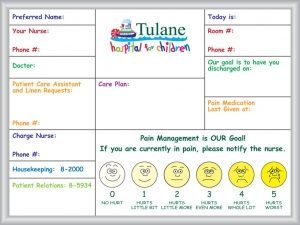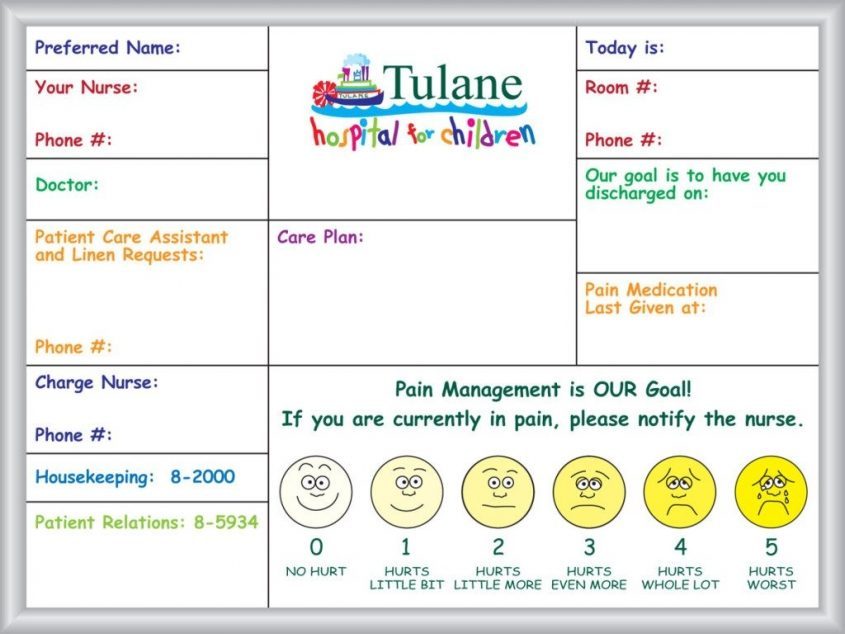What are the 5 most important elements of a patient whiteboard?
A patient whiteboard is a useful tool in a healthcare setting for improving communication and patient care. The content and design of a patient whiteboard can vary depending on the specific hospital or clinic, but generally, the following five elements are considered important:
 Patient’s Name and Photo:
Patient’s Name and Photo:
- Display the patient’s full name prominently at the top of the whiteboard. Including a recent photo of the patient can help healthcare providers easily identify the patient, especially in large hospital settings.
- Medical Team Information:
- List the names and roles of the primary healthcare providers involved in the patient’s care, including the attending physician, nurse, and any specialists. This helps patients and their families know who to contact and who is responsible for their care.
- Daily Goals and Plan:
- Outline the patient’s daily goals and care plan in simple terms. This can include information about scheduled tests, procedures, medications, and therapies. Having this information readily available helps patients and their families understand what to expect during their stay.
- Medication and Allergies:
- Clearly list the patient’s current medications, dosages, and schedules. Also, note any allergies or adverse reactions the patient may have to specific medications. This information is vital to avoid medication errors.
- Important Contact Information:
- Provide contact information for the patient’s family or emergency contacts. Include phone numbers, names, and relationships to the patient. Additionally, include contact information for the hospital’s patient advocate or ombudsman, in case patients have concerns or questions.
These elements can vary based on individual patient needs and the hospital’s policies, but the goal is to provide essential information to patients, their families, and the healthcare team to ensure effective communication and care coordination. It’s important to update the whiteboard regularly to reflect changes in the patient’s condition and care plan.




